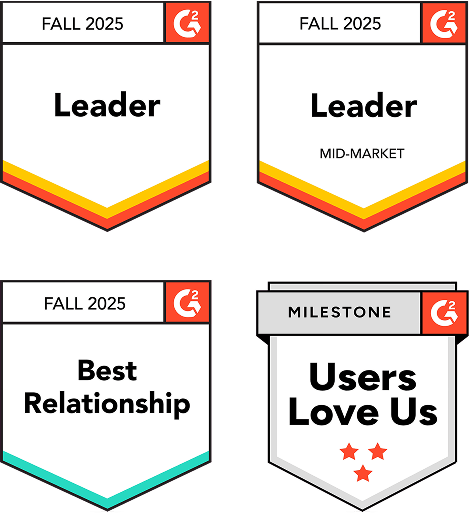By Eddie Ryan, Chief Executive Officer, Kneat Solutions | First published on learnaboutgmp.com
Companies operating in the life science industry are struggling to generate and maintain complex documentation. Strong regulatory oversight and the absence of suitable alternative technologies have stymied enthusiasm to move away from the current word processing environment. A robust database solution which adopts a document centric approach will meet the industry needs for data integrity in a familiar environment and is more likely to succeed because it offers all the benefits of robust data management in a familiar, tried and tested documentation environment.
Maintaining data integrity, consistency and accuracy becomes a major challenge when information is repeated across many documents. The life science industry has been slow to move away from familiar word processing tools and to adopt database driven solutions because: documents communicate diverse information in a context rich, structured format which is easily understood; regulatory bodies require access to “documented evidence”.
Do You Struggle To Generate And Maintain Critical Documentation?
Typical documentation concerns include:
• Document generation is labour intensive;
• Documents are of variable quality and format;
• Compliance with corporate and regulatory standards;
• Management of data which is repeated across many documents;
• Data integrity;
• Management of change.
Validation is an example of a document intensive process which has long been seen as problematic and inefficient. Figure 1 gives an overview of the information flows involved in the capital project environment.
Typical documents required by the validation process include requirements specifications, design specifications, drawings, material and personnel certificates (e.g. welding certs), operating procedures, manuals, test and inspection protocols and reports, etc. Many of these documents may be controlled in a document management system and strict change control procedures may be used to determine how change is initiated, reviewed and approved.
However, maintaining consistency and accuracy becomes a challenge when information is repeated across a set of documents as illustrated in Figure 2. The challenge is how to maintain trace-ability and visibility between documents. The problem of course is much larger than just the validation process. Refer to Figure 3 which gives a very high-level overview of the entire product and facility life-cycle from a company corporate perspective.
Current Approaches and Tools Available
Source documents are typically generated using the all pervasive Microsoft products such as MS Word, Excel and Access. There are many similar products available but the approaches are basically the same. The issues with the current systems have proven difficult to overcome because of the comfort factor associated with the use of easy to access, familiar tools and the absence of suitable alternatives.
Typical concerns for companies involved in large capital projects include;
• Translation of requirements into design;
• Collaboration across multiple stakeholders in different locations;
• Engineering data management;
• Confirmation that requirements have been met by the installation.
Common outcomes for large capital projects:
• Corrupt, inaccurate and missing data;
• Test documents are not aligned with design;
• The commissioning and qualification process is delayed and over budget;
• The document as-building exercise is a headache;
• Non-optimal plant start up impacts company goals.
Typical concerns for pharmaceutical manufacturing operations:
• Retention of project knowledge, practices and templates for plant maintenance, modifications and future projects;
• On-going document change execution;
• Cost of compliance;
• Risk of warning letters and citations;
One of the key issues for operations is how to effectively manage on-going document change execution. Change management and impact assessment on GMP documents is dependent on the diligence of subject matter experts and with the best will in the world is prone to errors and omissions, particularly when a change affects multiple systems and their associated documents. This is an issue right across the board for documentation related to regulatory filing, process technical transfer, facility/equipment qualification and process validation.
Developments in Database Applications

Retrospectively maintaining and updating documentation based on periodic reviews is a painful and time-consuming task. Clearly, an automated means of completing impact assessments on documents across a full lifecycle, which also identifies impacts to related systems, coupled with a means of automatically updating affected documents in real time based on an electronic approval process would be the Holy Grail. But are we any closer to achieving this goal?
Most research and development in this area has focused on the use of databases to centrally manage data. A document then becomes a snap-shot of the database at a point in time.
The question has to be asked why the life science industry has not adopted this information or data centric approach? There appears to be two primary reasons. We have often heard the quote that “if it is not written down, it did not happen”. Documents have long been a highly effective way of communicating diverse information in a context rich, structured format. Understandably, this has led to a reluctance to move away from the familiar tools or to consider new approaches such as the data centric approach proposed by some in the industry.
The second reason is related to the industry regulator’s requirement for “documented evidence”.
FDA definition of process validation:
“Process validation is establishing documented evidence which provides a high degree of assurance that a specific process will consistently produce a product meeting its pre-determined specifications and quality characteristics.”
The key concept of managing data centrally is sound and has been tried and tested in other industries. However, the issue arises when it comes to making changes to the data. This also has to be managed centrally and the impact on previously compiled documents has to be assessed after the fact. Documents, as mentioned before, are snap shots of the database and are not intelligent in their own right.
The Document Centric Approach
An alternative approach would be to dynamically link the documents to the database so as design data changes, for example, working copies of the documents are automatically updated and made live on approval. Also, changes could be made through the document portal and an impact assessment could be run to see the affect, or potential affects, on other documents. The advantage of this document centric approach is that the end user is still operating in a familiar, document based environment yet he is benefiting from the application’s ability to centrally manage data and content.
In this scenario:
• Documents are linked to the database enabling dynamic and holistic two way communication throughout the lifecycle;
• Data is managed through a familiar document environment;
• The database provides structure and context for document content.
The benefits of this approach are:
• Requirements, design and test documents will always be aligned;
• Content for downstream documents can be automatically generated;
• Online execution of testing and deviations;
• Automated assessment of the impact of change across all documents;
• Streamlined execution of change to all documents;
• Possibility of a Web-based platform for global collaboration.
Important business benefits for owners of manufacturing facilities include the retention of knowledge and easy access to data from the project phase, leveraging of work done across projects, built in quality and compliance in the business process and overall reduction in business risk – quality, safety and operational.
Summary
In summary, companies operating in the life science industry are struggling to generate and maintain complex documentation. Strong regulatory oversight and the absence of suitable alternative technologies have stymied enthusiasm to move away from the current word processing environment. A database solution which adopts a document centric approach is more likely to succeed because it offers all the benefits of robust data management in a familiar, tried and tested documentation environment.





